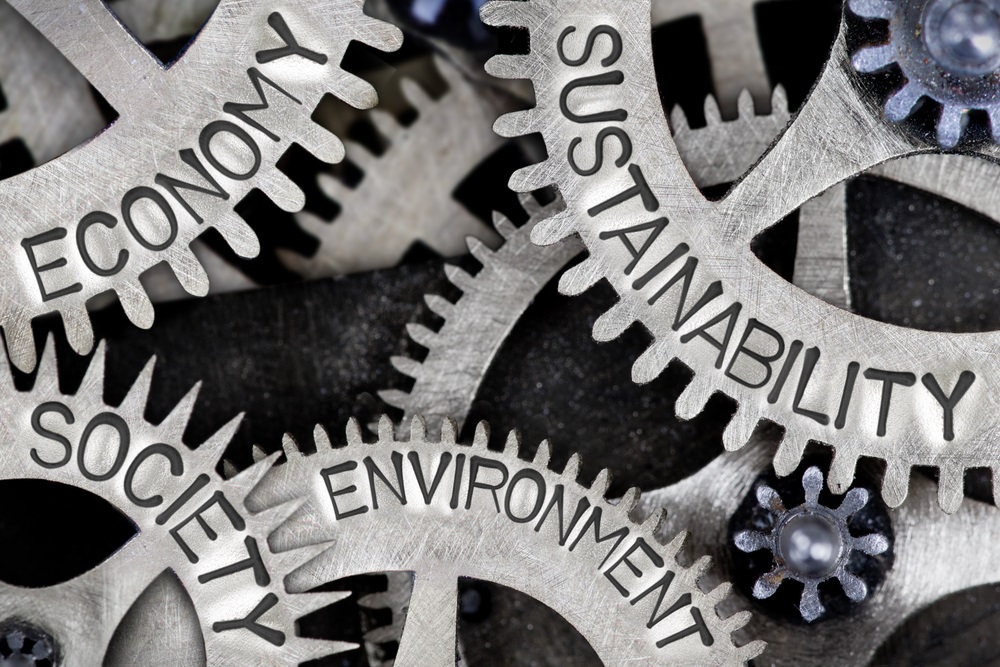Why Structural Steel Is Sustainable? Complete Details
Searching…
How structural steel is a sustainable material?
Let’s figure out together…All you have to do is keep reading and understanding…
Structural steel, in various forms like beams, columns, and sections, offers undeniable practical and aesthetic benefits in construction. But is it eco-friendly? The answer is a resounding yes. This article of WA Scrap Metal explores the sustainability of structural steel, its recycling process, and the ultimate reasons why it’s an environmentally conscious choice.
Structural Steel Sustainability | Comprehensive Guide
Is Steel Sustainable?
Absolutely. Despite the diverse shapes and sizes of steel products, their environmental friendliness remains consistent. Sustainable structural steel necessitates precision and consistency in fabrication.
How is Structural Steel Recycled?
Unlike traditional recycling, steel products are sold to scrap yards for compensation. Three main sources of steel scrap include Home Scrap, Prompt (Industrial) Scrap, and Obsolete Scrap.
Home Scrap: In-house steel waste in mills, usually redirected back into the furnace.
Prompt Scrap: Excess steel from industrial areas auctioned and sold to scrap buyers.
Obsolete Scrap: From household appliances, old cars, office, and household waste, including junked buildings.
Why is Structural Steel Environmentally Friendly?
Recyclable & Reusability
The metallurgical properties of steel ensure that recycling doesn’t compromise its structural integrity. This means steel can be melted down and reused indefinitely without any loss in quality.
The recyclable essence of steel plays a crucial role in diminishing the environmental repercussions of its production from raw materials. A striking example is the manufacture of steel cans, where using recycled steel consumes 75% less energy compared to the production from virgin materials.
Beyond energy efficiency, recycling just 1kg of steel contributes to keeping 2kg of greenhouse gases out of the atmosphere. Additionally, the recycling process diverts steel products from landfills, enabling the material to be reprocessed and conserving raw materials.
Every ton of recycled steel signifies substantial savings: 1131 kg of iron ore, 633 kg of coal, and 54 kg of limestone are preserved, underscoring the profound impact of steel recycling on resource conservation.
Lower CO2 Emissions
In contemporary steel manufacturing, particularly with the utilization of electric arc furnaces, there has been a concerted effort to minimize energy consumption. This approach not only results in more efficient production processes but also involves the capture and reuse of carbon dioxide byproducts, leading to a noteworthy reduction in overall carbon emissions when compared to traditional methods.
Furthermore, the carbon dioxide byproducts generated in the process can now be recaptured, purified, and repurposed in various applications, contributing to a more sustainable and eco-friendly production cycle.
The introduction of electric arc furnaces (EAFs) in steel production is a landmark advancement. These furnaces enable the utilization of large percentages of scrap metal, a key factor in minimizing the environmental impact. While producing steel from scrap metal inherently requires less energy, it is crucial to emphasize that modern steel production, particularly with EAFs, aligns with sustainable practices and is far from an unsustainable endeavor.
Versatile
In contrast to metals like aluminum and copper, steel is reusable for diverse applications without experiencing degradation.
Steel stands out as a versatile metal, contributing strength and durability to various aspects of our world. Its influence extends from towering skyscrapers to everyday household items, playing a vital role in technological advancement throughout history.
This iron alloy, comprised of elements like carbon, iron, and tin, remains highly recyclable.
No Harsh Chemicals or Toxins
Steel products do not release any toxic chemicals, offering a preferable environmental alternative. In contrast to other materials that generate abundant waste products during production, structural steel stands out for not producing any toxic runoff. For individuals incorporating steel products into their homes or commercial spaces, it provides peace of mind to know that, in situations such as exposure to excessive heat, steel will not emit anything harsh or hazardous.
Durable
In contrast to various alternative construction materials, only a minimal amount of structural steel is needed to support a building. Whether its stainless steel, galvanized steel, or mild steel, each exhibits strength and resilience to accommodate substantial loads. Regardless of the carbon content, all forms of steel are characterized by their robustness and enduring qualities.
Moreover, it is possible to construct entire building frameworks using welded steel beams and columns. In the industry, these are commonly referred to as steel frame buildings, widely employed in domestic and commercial projects for extensions, renovations, and external cladding systems.
Structural Steel’s Enduring Benefits
-
Everlasting
When it comes to enduring strength, steel structures stand the test of time, impervious to weather, fire, earthquakes, and pests. With an almost infinite lifespan, steel eliminates the need for frequent reconstruction, presenting itself as a sustainable choice.
-
Timeless Strength
Choosing steel for construction means building for eternity. It remains untouched by termites and other wood-boring insects. Resistant to cracking, warping, twisting, splitting, and rotting, steel can be engineered to thwart rust and vandalism. Its virtually eternal existence not only lessens the demand for raw materials but also mitigates the environmental impact of extensive tree felling.
-
Energy Efficiency
Houses framed with steel, owing to their inherent strength, accommodate thicker and more effective insulation. This characteristic translates to reduced energy consumption in both summer and winter, positioning steel as an energy-efficient alternative.
The inherent strength of steel allows for superior insulation, meaning less energy is required for heating in winter. In summer, these houses enhance air quality and diminish humidity, eliminating the need for dehumidifiers and air purifiers, further trimming energy costs and carbon footprints.
-
Minimal Wastage
Customized steel fabrication, tailored to each project, minimizes wastage. This precision not only diminishes environmental impact but also streamlines construction processes, necessitating fewer human resources and less overall resource consumption.
-
Water and Slag Renewal
Water plays a crucial role in steel production, mainly for cooling and cleaning. Special filtration processes render 98% of the water reusable, reducing water consumption. Furthermore, the stony waste product known as slag, once discarded, finds a new purpose in cement production, demonstrating a responsible approach in the steel industry.
-
Life-Cycle Sustainability
Steel’s impressive recycling rate, averaging around 85%, positions it as one of the most recycled materials globally. Even after demolition, a steel-made building sees 94% of its metal recycled or reused, contributing to a sustainable life cycle.
Applications of Recycled Steel
Recycled steel has become a cornerstone in diverse industries, ranging from construction and automotive manufacturing to packaging and general manufacturing processes.
-
Applications in Construction
In the construction sector, where steel is a fundamental component, recycled steel finds extensive use. Structural elements like beams, columns, and reinforcing bars can crafted from recycled steel, possessing the same strength and durability as their counterparts made from new steel. The added advantage is a notable reduction in carbon emissions.
-
Automotive Industry Integration
The automotive industry, consumer of steel, benefits from the incorporation of recycled steel in various components such as body panels, chassis, and engine parts. Utilizing recycled steel in automobile production not only maintains product integrity but also actively lessens the environmental impact of the industry.
-
Packaging Solutions
In the packaging industry, where steel is instrumental in creating cans and containers, recycle-steel emerges as a sustainable choice. The production of new packaging materials using recycled steel minimizes the demand for virgin steel, leading to resource conservation and a subsequent decrease in carbon emissions.
-
Manufacturing Advancements
Within the broader manufacturing landscape, recycled steel plays role in craft a diverse array of products, including appliances, furniture, and machinery. This incorporation of recycled steel contributes to reducing the environmental footprint of the manufacturing industry, promoting responsible resource usage.
Conclusion
As we conclude this guide on sustainable steel, it becomes evident that embracing environmentally conscious practices within the steel industry is not just a choice; it is an imperative stride towards a greener and more sustainable future. The versatile applications of recycled steel, as explored across construction, automotive, packaging, and manufacturing sectors, underscore its role in minimizing the carbon footprint across diverse industries.
FAQs
Is steel framing sustainable?
Yes, steel framing is sustainable. Steel’s durability, recyclability, and efficiency use in construction makes it a green choice.
What is the carbon footprint of structural steel?
The carbon footprint of structural steel has significantly reduced over the years. Modern production methods, like electric arc furnaces and increased use of scrap metal, contribute to lower emissions.
Why is steel unsustainable?
Contrary to popular belief, steel is not inherently unsustainable. However, inefficient production methods, excessive waste, and lack of recycling efforts can contribute to its perceived unsustainability.
Why is steel a sustainable building material?
Steel is a sustainable building material due to its recyclability, longevity, and minimal environmental impact. Its reusable ability without compromising strength makes it an eco-friendly choice.
What are the sustainable facts about steel?
Sustainable facts about steel include its high recycling rate, reduction in carbon emissions during production, and its versatility in various applications. Steel’s enduring properties contribute to a more sustainable construction industry.


